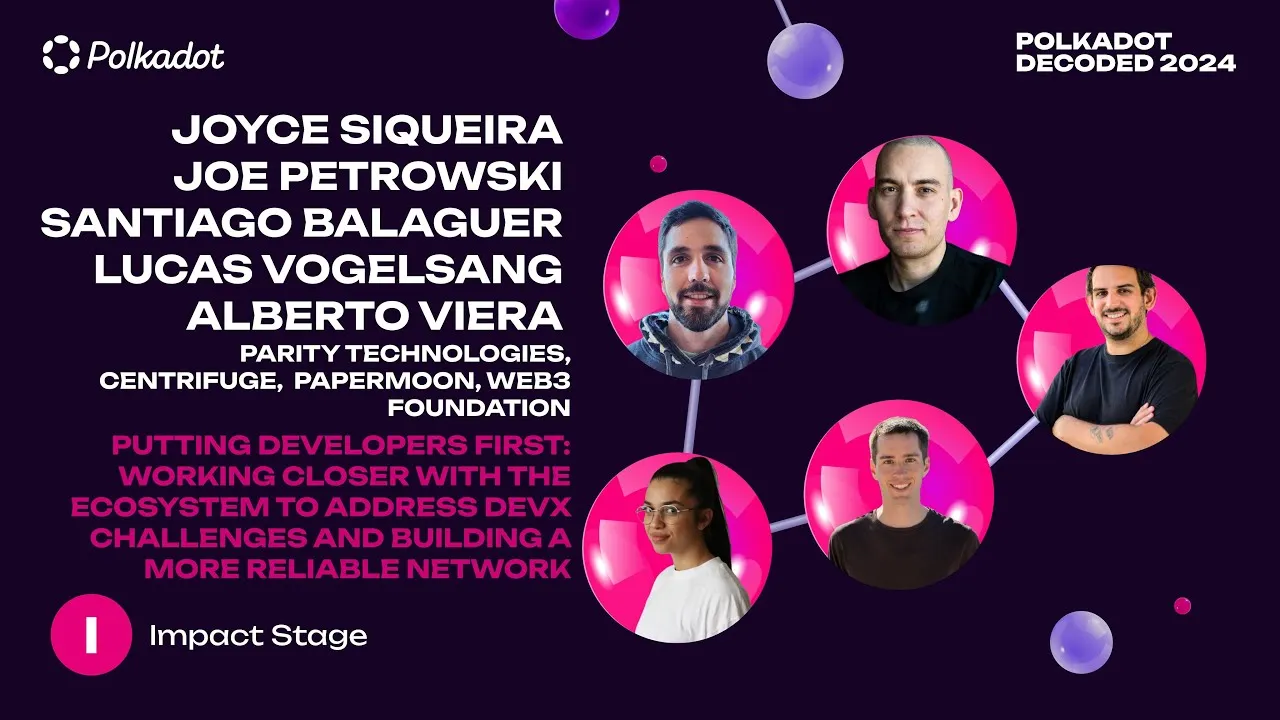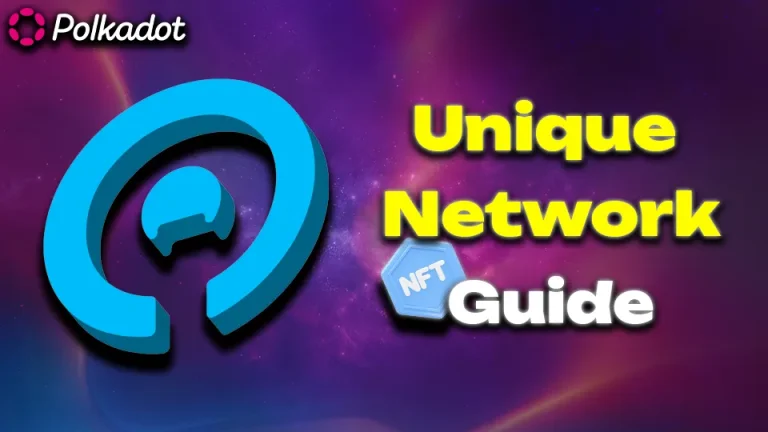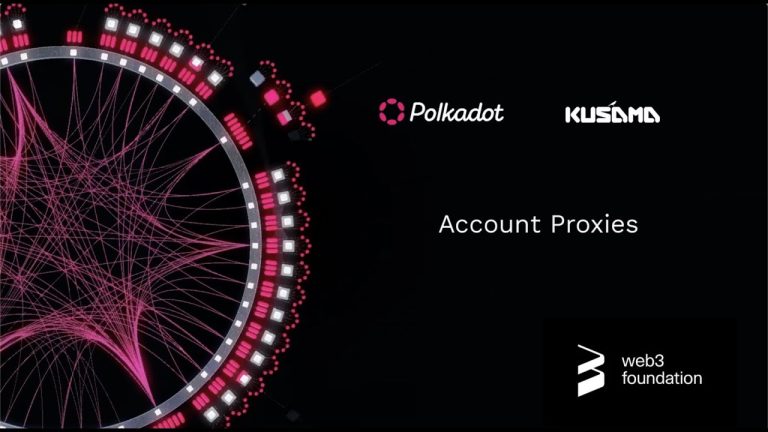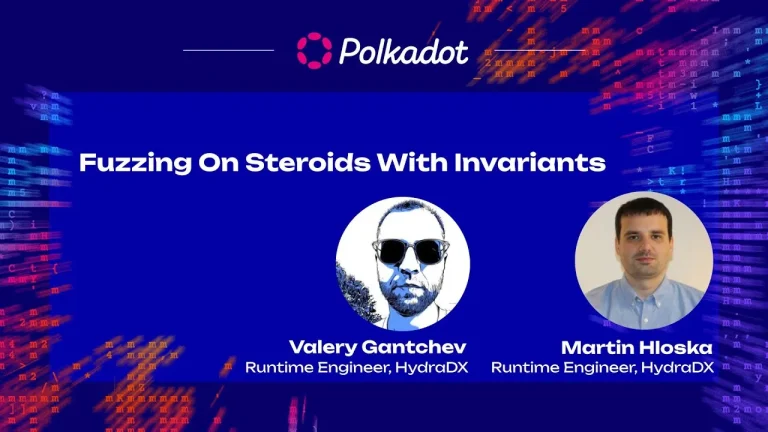In a recent panel discussion at Polkadot Decoded 2024, prominent figures from Parity Technologies, Centrifuge, PaperMoon, and Web3 Foundation came together to address the current state and future prospects of developer experience (DevX) within the Polkadot ecosystem. The session, titled “Putting Developers First: Working Closer with the Ecosystem to Address Developer Experience Challenges and Building a More Reliable Network,” featured insights from Joyce Siqueira, Joe Petrowski, Santiago Balaguer, Lucas Vogelsang, and Alberto Viera.
Enhancing Polkadot Developer Experience Panel Key Highlights
1. Polkadot’s Competitive Edge and Complexity: Lucas Vogelsang from Centrifuge highlighted the inherent trade-offs of Polkadot’s advanced and scalable technology. While acknowledging Polkadot’s superior scalability compared to other blockchains, he pointed out the complexity that developers face, particularly new entrants. He drew a parallel to early 2000s asynchronous JavaScript, emphasizing the need for improved abstractions and standardized solutions akin to Ethereum’s EIP framework.
2. Challenges and Solutions for Developer Onboarding: Santiago Balaguer of Parity Technologies echoed Vogelsang’s sentiments, emphasizing the importance of simplifying the onboarding process for new developers. He stressed the need for up-to-date resources and a more straightforward pathway to understanding and utilizing Polkadot’s technology. Alberto Viera from Moonbeam added that maintaining pace with Polkadot’s rapid development cycles remains a challenge, requiring constant updates and adaptations.
3. Addressing XCM Adoption and Stability: Alberto Viera discussed the challenges surrounding the adoption of Cross-Consensus Messaging (XCM) within the ecosystem. Despite its potential, XCM’s complexity has hindered widespread adoption. Viera praised recent improvements in receiving and incorporating community feedback, which has positively impacted the development of more user-friendly solutions.
4. The Role of Parity and Community Collaboration: Joe Petrowski from Web3 Foundation highlighted the significant role Parity Technologies plays in driving Polkadot’s development. However, he emphasized the necessity of community-driven initiatives to address specific needs, such as the example of Centrifuge’s Velocity program aimed at improving DeFi infrastructure within Polkadot.
5. Future Prospects: Documentation and Developer Tools: Alberto Viera outlined ongoing efforts at PaperMoon to create comprehensive and unified developer documentation for Polkadot. This initiative aims to centralize resources, making it easier for developers to find the information they need, whether they are building parachains, smart contracts, or other applications within the Polkadot ecosystem.
Polkadot Developers Simplified Onboarding
The panel concluded with a discussion on the future of Polkadot’s developer experience. Santiago Balaguer highlighted promising initiatives like Talisman and other projects simplifying the process of spinning up app chains and enhancing cross-chain messaging. Alberto Viera and Lucas Vogelsang emphasized the importance of continuous community feedback and collaboration in shaping the ecosystem’s future.
Conclusion
The session underscored the critical role of developer experience in the growth and success of the Polkadot ecosystem. By addressing current challenges and leveraging community-driven solutions, Polkadot aims to create a more accessible and robust platform for developers, ultimately driving broader adoption and innovation.








